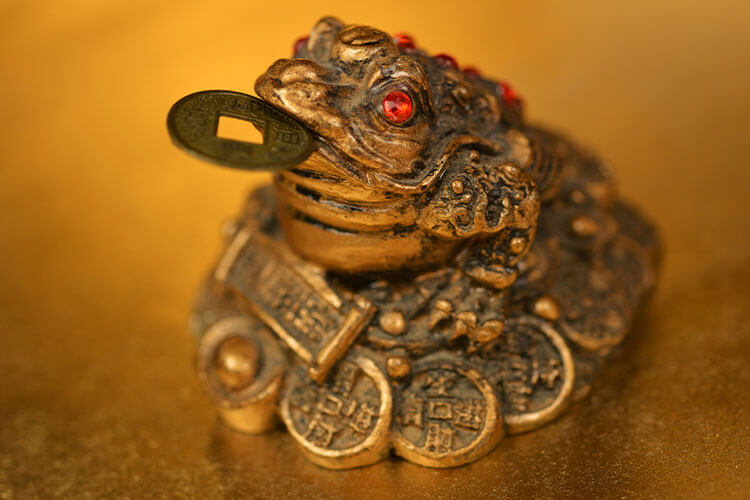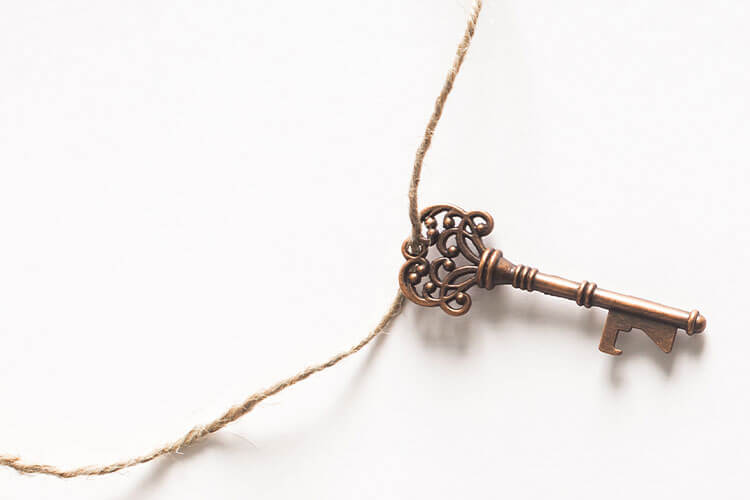
Crossing your fingers, touching wood, avoiding going under the stairs, are just some of the superstitions that are supposed to strengthen your good luck and help you stay away from bad luck.
Achieving full happiness and success has been something that people have craved since the beginning of time, and in fact, not much has changed over the years. Over the centuries, all cultures have sought different ways to attract luck. We find spells, superstitions, concoctions, symbols, talismans and amulets to help achieve this purpose.
The need, the magic, the rarity or the properties attributed to certain objects make us turn them into amulets, which help us protect and attract the smile of destiny.
Discover the symbols of happiness that over the centuries have helped people attract success, prosperity, love and stability.
Contents
Four-leaf clover
The four-leaf clover is one of the most popular symbols of luck in the world. The fourth leaf, usually from a three-leafed plant, is the result of a rare mutation. According to estimates, the probability of finding a lucky clover is between 1 and 10,000, so if you find it, you can consider yourself very lucky.

In the old tradition, three clover leaves referred to the three virtues: faith, hope and love, while the fourth meant prosperity.
Even today it is believed that each leaf of the four-leaf clover attracts the elements that make up the fullness of happiness: love, wealth, health and good reputation.
Horseshoe
The horseshoe is one of the oldest symbols of luck coming from the hands of the ancient Greeks. Its shape resembles that of a crescent moon, a symbol of fertility and prosperity, and like the Slavic lunula, these meanings were also inscribed on the horseshoe. Furthermore, made of iron, it provided protection against evil.
The Romans, heirs to many Greek traditions, spread the use of this symbol of happiness throughout their empire.

The horseshoe was placed in front of the entrance of the house, usually looking upwards to collect the happiness. Although some believed that if you rotated the tips of the horseshoe downwards, you would see happiness in the homeowners.
This belief was also reinforced in the Christian era. According to legend, in the 10th century, the English archbishop, St Dunstan of Canterbury, told that iron horseshoes had to be worn to keep the devil away. This demon, unable to withstand iron, promised not to appear again, if St Dunstan would eliminate them. From then on, the horseshoe hanging on the door prevented the devil from entering the house.
Rabbit’s foot
The rabbit’s foot, together with the four-leaf clover and the horseshoe, is one of the oldest symbols of luck that still serves to attract good luck.
The first use of the rabbit’s foot in the context of the talisman is attributed to the Celts, although it began with hare’s feet.
Hares were believed to be sacred animals, with exceptional powers, and therefore people feared them.
However, over time, in pre-Christian Europe, stories about the extraordinary healing properties of hare legs began to spread. After applying such a leg to the area where you suffered from rheumatism or cramps, the pain would magically stop. These stories reached as far as Asia, and treatment with hare legs became increasingly popular.

During the Roman Empire, rabbits began to spread throughout the old continent (previously they were only found in the Iberian Peninsula and North Africa). Rabbit feet were much easier to get hold of than hare feet, so their popularity began to grow rapidly.
Although Christianity officially recognised this amulet as pagan, people did not stop giving each other rabbit’s feet. They were supposed to protect against the evil eye and disease.
The ability of these animals to reproduce rapidly has not remained unimportant in terms of meaning. Very quickly, this adjective was inscribed in the symbolism of the rabbit’s foot, which became a fertility charm and a guarantee for the rapid appearance of children in the family.
Many ways were also created to enhance the qualities of the rabbit’s foot. And, yes, it is better if it is a left hind leg. It was also more effective when carried in the left pocket.
Elephant
An elephant with its trunk up is one of the most popular symbols attracting happiness and good luck all over the world.
This symbol, for the Western world, came from India. In Hindu beliefs, the elephant symbolises memory, wisdom, strength, courage, longevity, patience and honour.

Ganesa, who has laid the foundation for contemporary elephant symbolism, is one of the most important deities in Hindu beliefs. He had a human body and an elephant’s head. The embodiment of wisdom, the one who removes all obstacles and ensures success for all purposes.
According to various beliefs, wearing a pendant or bracelet with an elephant transmits to its owner the characteristics of this animal: wisdom, strength, courage and patience. The figure of an elephant also helps to achieve success in personal and professional life.
Dolphin
Dolphins have been a symbol of happiness since ancient times. Anyone who saw them at sea could be sure that good fortune was waiting for them.

For centuries, sailors have told extraordinary stories about dolphins, how they protected people at sea and helped them reach their destination safely. Therefore, these animals have always been seen as friends, guides and human helpers.
Therefore, very quickly the image of the dolphin became a protective amulet, which ensures success and helps you stay on track to achieve your goals.
Egyptian scarab beetle
The ancient Egyptians believed that beetles appeared from nowhere, thus becoming a symbol of life and power. A beetle rolling a ball of dung also represented the sun’s journey in the sky and its rebirth.
Therefore, for the Egyptians, the beetle has become a powerful amulet that guarantees a rebirth, protection during life and after death, from all kinds of evil. It gave strength and power.

They also placed themselves over the hearts of the dead, which was a protection on their journey to the underworld, the resurrection and the attainment of eternal life.
To this day, there is a belief in the extraordinary protective power of the beetle and its power to attract happiness. Made of various materials, most often used as necklaces, they protect their owners from all visible and invisible evil.
Ladybird
The ladybird is a messenger of good news and a symbol of happiness in search of love. When it lands on your hand it brings luck. If you have that luck, take the opportunity to make a wish, because that’s when you have the greatest chance of having it come true.

There is a legend related to the ladybird. It took place in the Middle Ages. A year came when plagues destroyed most of the crops and famine took over. In desperation, they began to pray fervently to the Virgin Mary for help. And soon the ladybirds appeared and ate the plagues.
Since then, among Christians, the ladybird has become not only a symbol of happiness but also a bond with God.
Money Frog
The three-legged toad, abundance frog, chan chu or money frog are the different names for a frog figure with a coin in its mouth that attracts wealth, abundance, prosperity and happiness.
For this talisman to work properly, it is important to place it carefully, following scrupulously the rules of Feng Shui.

The magic of prosperity is released when it is tied with a red ribbon or placed on a red surface.
It was believed that Chan Chu went out every night to collect coins, so they often put it near the door, in front, on a diagonal. Always facing the room. Never directly in front of the door, because then he could leave the house and never come back.
You can put it on the floor or on a low piece of furniture, such as a coffee table. If it is placed too high, the frog could not jump to fulfill its mission of bringing wealth home.
Remember that, if you want to attract money, you should not put a frog in the kitchen, in the bedroom or in the bathroom, because it could bring bad luck.
Maneki neko
Maneki neko, the Japanese cat of happiness, is an amulet that evokes prosperity and wealth. Literally his name can be translated as “cat inviting in”.
With the right leg up, it attracts money and wealth; the left leg up invites customers. The higher it is, the more happiness it brings.
That’s why you can find these figures so often in shops and restaurants both in Japan and in other eastern countries.

Although the most popular maneki-neko has a tricolour coat, figures of other colours have begun to appear, dedicated to a particular aspect of life, to enhance the strength of the amulet.
Acorns
The unique properties of oak trees were already highlighted by the first people living in Europe. The oak was a sacred tree for, among others: Celts, Greeks, Romans, Vikings or Slavs. Strong and unbreakable. During storms, this tree was often struck by lightning, but curiously enough it suffered the least damage.

The fruits of the oak tree, the acorns, have become a symbol of happiness, prosperity and power. As an amulet, they protect against magic, disease and physical pain. They accelerate the healing process and relieve pain.
It is also a talisman of happiness for all those who need strength and perseverance in the pursuit of their goals.
Lucky Bamboo
The lucky bamboo, despite its name and appearance, is not really a bamboo. This plant, which is deceptively similar to bamboo, is a dracaena sanderiana. It reproduces easily, grows quite fast, can live many years in unfavourable conditions and in nature can reach several metres.

In Asian culture, people have long given each other the buds of this plant to attract happiness, wealth and strengthen personal development.
The rule is simple, the more lucky bamboo stalks, the more happiness they will bring to their owner. Three stems promote happiness, joy and longevity, five stems attract wealth, seven stems are a health charm and the fullness of happiness and success is achieved with up to 21 stems.
Jade plant
Crassula ovata, popularly known as the jade plant, comes from South Africa. It is also a talisman that attracts luck and wealth, which has gained popularity worldwide.
This eternally green plant, with its constantly growing energy, has large, thick, round leaves that look like coins. It is this reference to the coins growing on the tree that has made the jade plant a symbol of wealth and prosperity today.

According to Feng Shui, this plant produces positive energy that brings good fortune and success to its owner.
The best thing is to place it right at the entrance of the house, restaurant, shop, thus inviting luck.
Sometimes it is also called the friendship tree, because it is customary to cut off a piece of the branch and give it to someone nearby so that their house will also be a place of prosperity.
Planting a tree in a red pot will greatly increase its magic effect.
Evil eye
Since time immemorial it has been believed that jealousy brings misery. A person who is the object of jealousy often did not know that he had just been the victim of such a curse, so it became necessary to have protection.
In the Middle East, already in the times of the first civilizations that lived there, the evil eye or nazar became an amulet that protected from the gaze of evil. Today, especially in Turkey, it still serves to protect against the negative influence of human jealousy.

This amulet absorbs bad emotions and energies directed to its owner, protects against jealousy and the evil eye. According to the beliefs of the time, the eyes are the part of the body that most clearly shows people’s bad feelings.
Mostly it is worn as a necklace, bracelet, earrings, but it can also be put in a handbag, on the desk at work, in the car or on the door at home.
If it breaks, it is a sign that it has done its job and protected against the evil eye. Then you must get rid of it and replace it with a new nazar.
Chinese lucky coins
Chinese coins with a square hole, called “cash”, were first minted in the 4th century BC and were in circulation until the 20th century AD.
It was believed that these coins had a special power to attract wealth and prosperity.

The unique properties of this lucky charm are represented by a circular coin with a square hole in the middle. To enhance the function of this talisman, several coins were often tied with a red ribbon.
The number of coins tied is not unimportant. According to the rules of Feng Shui, a minimum of three coins or any other multiple of this number must be tied.
It is worth keeping them in the place where you usually keep your money, for example, in your wallet or pocket, although they are also used as pendants, or even hung next to the beds of the sick or, following the rules of Feng Shui, placed in the energy points of the house.
The key
The key, as a symbol of luck, carries the message of opening, but also of closing in terms of protection. It is often worn as a pendant and used as a talisman to open the door to love, wealth and health. It also protects against evil powers.

An ancient legend says that, before the creation of mankind, the gods wondered what to do to prevent mankind from equalising them in strength and power. Humans were supposed to be intelligent, resourceful and wanted to be happy, so they decided to hide something as important as the key to happiness from man.
For a long time they doubted where to hide it: the peaks of the highest mountains, the depths of the seas… They knew that eventually man would find it.
Until the wisest of the gods finally found a solution. He suggested hiding the key to happiness close to the heart of man. People who are only concerned with accumulating wealth and power will not have time to look within themselves to find happiness.
Hotei – Laughing Buddha
Hotei, popularly known in the western world as the laughing Buddha, is a talisman that attracts wealth, prosperity and happiness.

The figure shows a bald Buddhist monk with long ears at shoulder height and a large exposed belly. It is believed that rubbing Hotei’s belly attracts luck. The character laughs, as a representation of the joy resulting from the happiness achieved.
Dreamcatcher
The dreamcatcher is an indigenous amulet that provides a peaceful sleep and protects against nightmares.

According to Native American beliefs, the dream catcher is a gift from Mother Spider, who has woven a web that catches dreams, both good and bad. At the centre of the amulet was a hole in the middle, where good dreams seeped into the sleeper, while bad ones, disturbing his peace, were destroyed by the first rays of the sun.
Worry doll
Originally from Guatemala, the doll is a traditional Mayan protection amulet that is still very popular today. Its purpose is to protect from problems, especially young children.

Tradition says that if you have a problem that disturbs you, tell it to the doll and put it under your pillow. The doll will take care of you, calm you down and help you sleep peacefully.